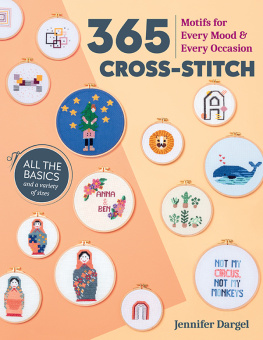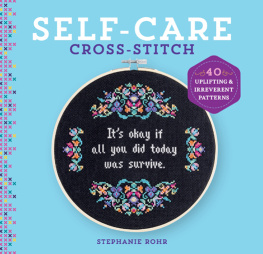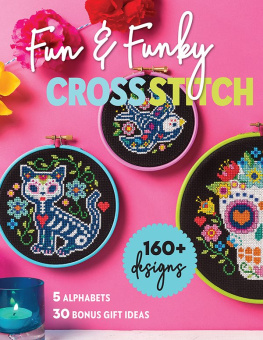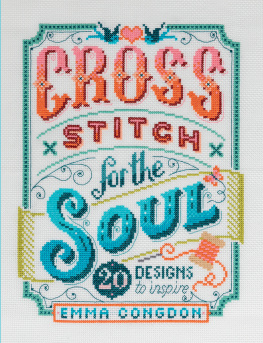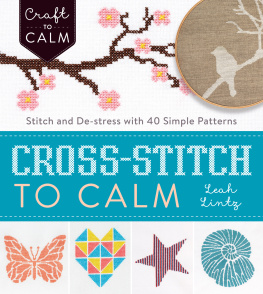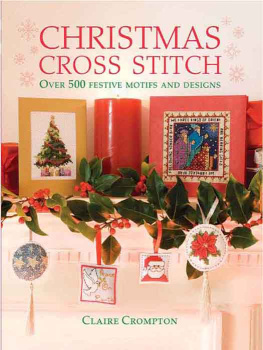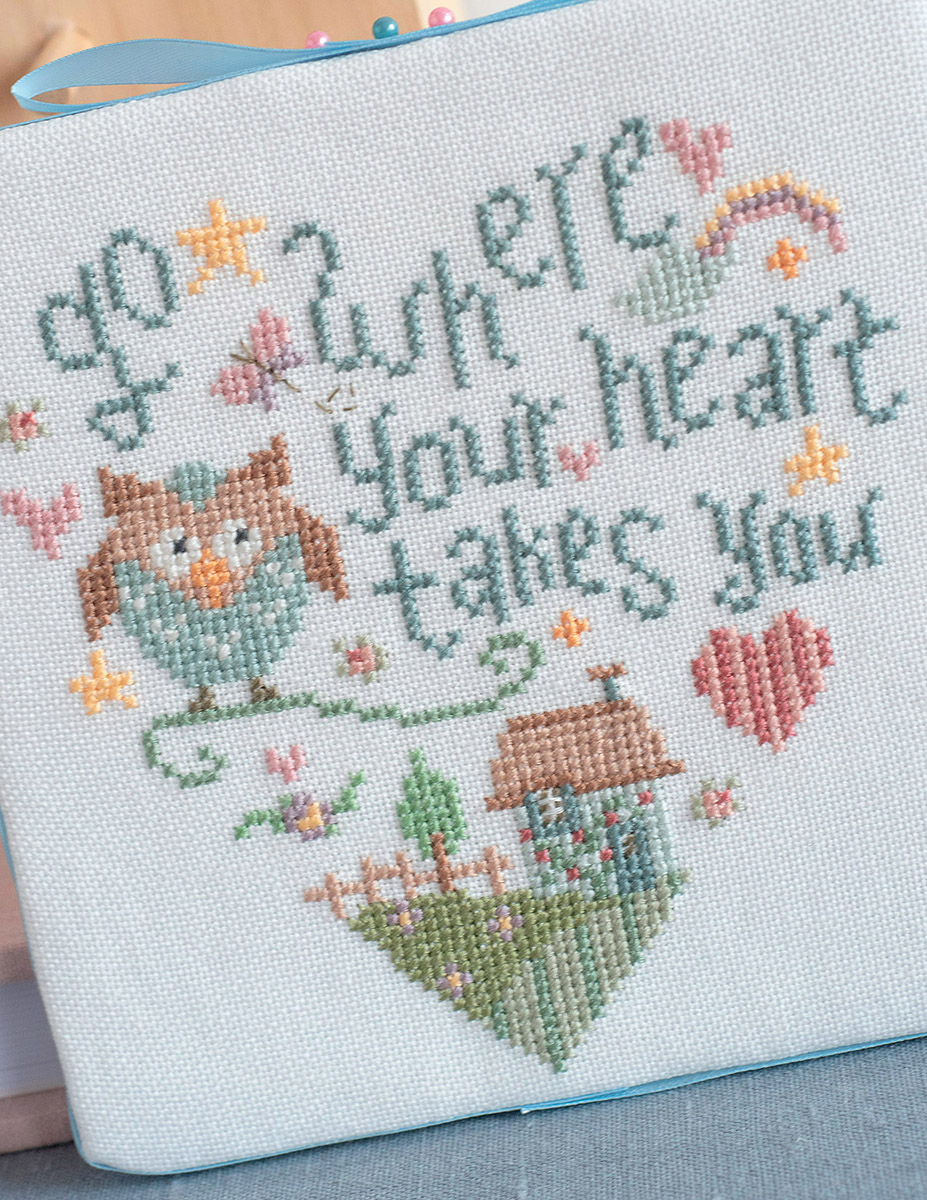T his book is divided into three sectionsInspire, Create, and Connecteach with a different theme and focus. There is also a final section providing alphabet charts for readers who would like to create their own stitched words/quotes.
The counted cross-stitch designs in this book are all fairly simple and can be easily achieved by a confident beginner in this form of needlework. Most of the designs are done entirely in cross-stitch, with only limited use of backstitch or other specialty stitches like French knots.
I use evenweave fabric (such as Jobelan by Wichelt) and sometimes linen, in either 28-count or 32-count; that is my personal preference, but you are free to use other fabrics (such as Aida) or different stitch countsalthough do bear in mind that doing so will change the finished size of the stitched design. I also use DMC embroidery floss almost exclusively; I like both the quality and the vast color range, but you can replace this floss with other brands/colors or overdyed threads if you prefer.
The designs in this book are not large, and most can be stitched in a couple of days or a week or two at the most. I dont personally enjoy projects that take forever to complete (or perhaps I am just lazy!), but many stitchers have also told me they prefer quick-to-stitch pieces because we are all a little time-poor these days.
Each project is accompanied by a full color chart/key and stitching instructions, together with ideas for finishing the piece creatively.
Basic Instructions for Stitching the Designs in This Book
- All designs are stitched over two threads of evenweave fabric (or one block of Aida if you choose to use that material).
- Two threads of embroidery floss are used for cross-stitches, and one thread for backstitch and half stitch.
- French knots are made with one thread of floss, with two wraps around the needle.
- You will need a size 24 or 26 tapestry/cross-stitch needle to stitch these projects, along with a pair of small, sharp embroidery scissors.
- For finishing designs, you will need a pair of larger dressmaking scissors; a sewing machine is helpful but not essential. All of these projects can also be finished using hand sewing.
Little stitched designs and words help us find peace, joy, and hope, especially when we are going through difficult and painful times.
Someone once said that the only kind of courage we really need sometimes is the kind that gets us from one moment to the next! And by doing so, we can really find our way through even painful or difficult days, one step at a time. Simply by keeping a sense of possibility, of hope, we will begin to see a bigger and better picture for ourselves and our lives and restore ourselves with grace and strength. Hope is a good thing, perhaps the best of things, and no good thing ever dies. That quote comes from my all-time favorite movie, The Shawshank Redemption, and formed the basis of my inspiration for the two designs offered here, both focusing on finding hope and seeing the possibilitiesthe rainbow!even on dark and gloomy days.
This colorful little design reminds us to keep positive and see the blessings and color in every single day! It has been finished as a small, self-standing piece that can be displayed in a number of creative ways in your home; alternatively, it could be framed.
Fabric: 28-count pale blue Jobelan by Wichelt (stitched over 2 threads)
Stitch count: 102 wide 48 high
Stitched size: 7 in. (19.1 cm) 3 in. (8.9 cm)
Cut the fabric at least 3 inches (7.6 cm) larger than the finished stitching size; fold to find the center, and then count out and start stitching at a convenient point, following the color chart/key. When stitching is completed, wash the piece (if necessary) and press lightly from the back.
Trim the stitched piece to within 1 inches (3.8 cm) of the stitching all around. Cut two pieces of thin foam core board, each measuring approximately 8 4 inches (20.3 10.2 cm).
Cover one side of each piece of board with a thin layer of cotton fiberfill or batting, or, alternatively, use a piece of soft felt. Cut a piece of floral or plain cotton fabric, at least 1 inches (3.8 cm) larger than the foam core board pieces; stretch this piece over the padded side of one of the boards, and glue securely in place at the back. Stretch the stitched piece over the other padded board, and glue this into place at the back too. Spread a layer of glue over the backs of both boards and press them together, fabric and stitched side out. Gently press down with something firm and fairly heavy; leave to dry for at least half an hour. Cut a piece of satin ribbon, at least inch (0.8 cm) wide, in a color of your choice, and glue it completely around the two joined pieces, starting and ending at the bottom middle. Then cut another length and make a looped bow (see photo as a guide), and glue it securely in the top middle of the piece. Press in several hat pins (or pins with beaded tops) along the top of the finished piece.


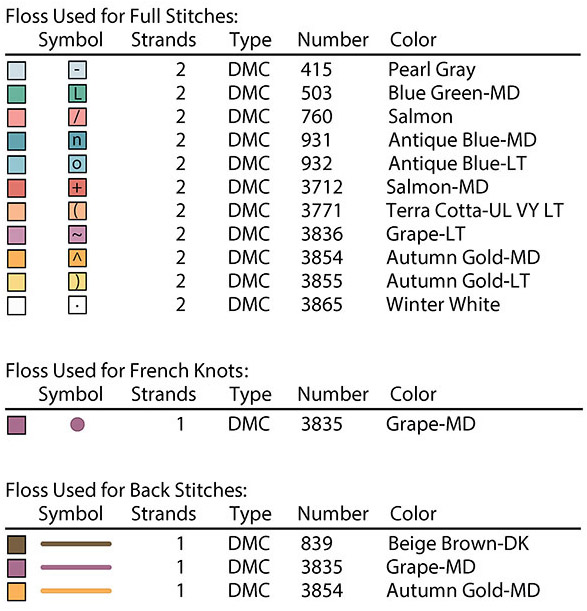
Note:
Stitched on 28-count pale blue Jobelan (by Wichelt), over 2 threads
Two happy bluebirds and their little home form the basis of this design, with wording that reminds us to always be hopeful and look for the blessings in our lives. This design was finished as a small pillow with patchwork fabrics and cotton lace, but it could also be simply framed or placed in a hoop.
Fabric: 28-count cafe mocha Country French Linen by Wichelt (stitched over 2 threads)
Stitch count: 63 wide 63 high
Stitched size: 4 4 in. (11.4 11.4 cm)
You will need a piece of linen at least 9 inches (22.9 cm) square. Fold in half and count out to start stitching at a suitable point. When you have finished stitching, wash and lightly iron the piece on the back (if necessary). Trim the fabric to within 1 inches (3.8 cm) of the stitchingdoing so allows for a -inch (1.3-cm) seam when stitching the pillow. Cut two pieces of floral patchwork fabric: one 4 inches wide 6 inches high (11.4 16.5 cm), and the other 3 inches wide 6 inches (8.3 16.5 cm) high. Cut a piece of cream cotton lace, and stitch it onto the right side of the larger floral piece, using the photo as a guide. Stitch the two patchwork pieces to the stitched linen piece, right sides together, along the short sides. Press the seams open. Cut a piece of calico or similar fabric the same size as the front pillow piece, and stitch the two pieces together, right sides together, starting at one side and leaving a space of about 3 inches (7.6 cm) for turning/filling. Turn the pillow right side out, press lightly if necessary, and stuff with fiberfill; whipstitch the opening closed.



